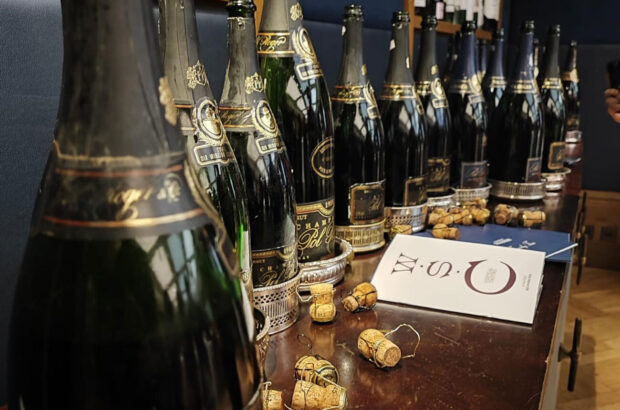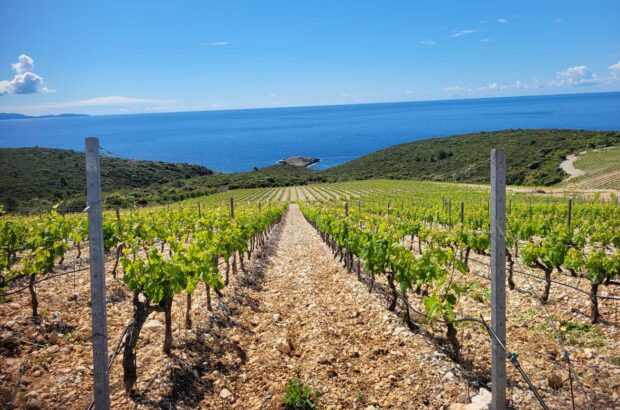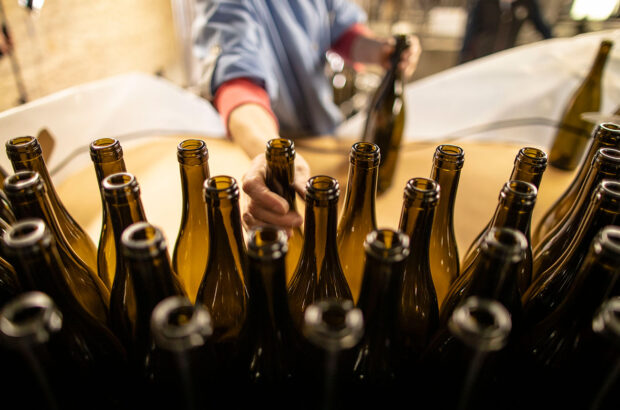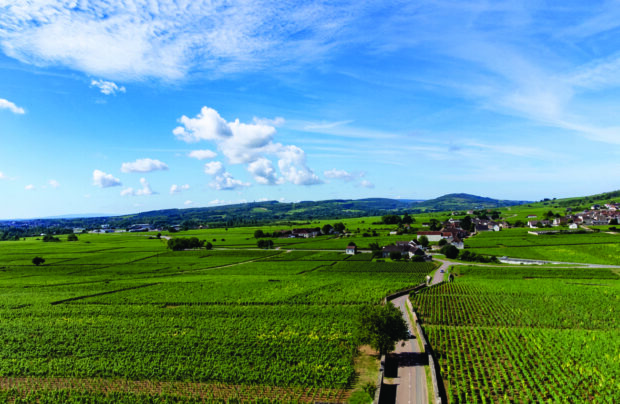Château Calon-Ségur
One of the oldest properties in the Médoc and the most northerly of the crus classés, Château Calon-Ségur is anything but a ‘fashionable’ estate. With its twin-towered aristocratic château, French gardens and conservatively discreet ownership, ‘traditional’ is more the word that comes to mind. The wines, too, classic, long-lived and displaying all the vagaries of vintage, have generally been dubbed with the same time-honoured, traditional epithet. This, though, could all be set to change for, behind the scenes, the wines and the estate are being given the sort of judicious face-lift that will set them up for the modern era.
The estate is located in the commune of Saint-Estèphe, and is said to date back as far as Roman times. In the Middle Ages it was part of the fief of the lords of Lesparre, one of whom had the title of Monseigneur de Calon, Bishop of Poitiers. The name Calon is thought to have been derived from the word ‘calones’, the sobriquet given to the small rowing boats that at one time plied timber across the Gironde and which in turn was given to the parish of Saint-Estèphe. Indeed, until the French Revolution the village continued to be known as Saint-Estèphe-de-Calon.The château itself dates from the 17th century when the property was owned by the de Gasq family. In the 18th century the estate came into the hands of the powerful house of Ségur. Nicolas Alexandre, Marquis de Ségur, known locally as the ‘Prince des Vignes,’ also owned Lafite and Latour and is credited with the saying: ‘I make wine at Lafite and Latour, but my heart is at Calon.’ As a testament to this Calon-Ségur still carries a heart on the label.
The 1855 classification saw Calon-Ségur designated as a third growth. It was then owned by the Lestapis family and had grown to a sizeable 55 hectares (ha), still the area under production today. In 1894 the property was acquired by Georges Capbern- Gasqueton and his uncle Charles Hanappier and remains in the same family. Philippe Capbern-Gasqueton managed the estate from 1962 until his death in 1995 when his wife, Denise, who still lives on the property, took over. With the exception of cru bourgeois Sociando-Mallet.
Environmental conditions
Further north, Calon-Ségur occupies the last classic gravel mound in the Médoc. The Gironde is but a kilometre away, a series of gravel topped hillocks descending towards its marshy shores. To the north lies a drainage ditch, the Chenal de Calon, which evacuates water towards the estuary. The soil is a composite of gravel mixed with clay, sand and limestone with a higher percentage of clay than is found in Pauillac and Saint-Julien further south. The bedrock is a marly limestone, the calcaire of Saint-Estèphe, which adds its contribution to the robust, minerally nature of the wines.
The Calon vineyard
The majority of the Calon vineyard surrounds the château, enclosed by a stone wall and orientated in a generally northeasterly direction. Further south, another parcel is located close to Château Montrose. The vineyards are planted with 60% Cabernet Sauvignon, 30% Merlot and 10% Cabernet Franc, the vines averaging around 30 to 35 years old. Curiously, the density of plantation, at 6,500 vines/ha, is below the norm in the Médoc. When the decision was taken to plant ‘large’ in the 1950s and 1960s, the logic was that it eased work, aerated the plants and reduced yields. The reality is that yield per vine can become heavier unless carefully controlled and the owners are now steadily replanting to a more classical 8,000 vines/ha. Improvements in quality in Bordeaux over the last decade have generally been linked to work in the vineyards and Calon is no exception.
Apart from the programme of replanting, a stricter control of each parcel of vines has been instigated in order to harvest each at the optimum moment of ripeness. The soils are worked and a little green harvesting practiced in the better parcels. The grapes are harvested by hand and sorted at the cellars. Yields for the grand vin turn around 45 hectolitres/ha. The winemaking takes place in a brand new cuverie encased within the walls ofthe 18th century chai. Forty stainless steel tanks of varying size equipped with a computerised temperature control system have now replaced the old enamel lined steel tanks. The temperature for the fermentation is maintained at around 30˚C, the juice pumped over the grape cap and the total vatting time held to around two to three weeks depending on the vintage. Excessive extraction is avoided and the press wine (five to eight percent of the total blend) used to build structure.
Ageing wines
The ageing of the wine has been reviewed and, in keeping with modern practices, 25% now undergoes malolactic fermentation in barrel. Selection for the grand vin and second label, Marquis de Calon, is made early on,as is the decision for the blend. The wine is aged in oak barrels, 50% of which are new, for up to 18 months, a reduction in time from the past when it was kept for upwards of two years. Along its course, the wine is followed by consultant oenologist Professor Pascal Ribéreau-Gayon.
As to the wines, the term that has usually been applied in the past is inconsistent. This one can read to mean that in the better vintages the wines have a natural power and richness allied to a solid structure and freshness with good potential for ageing. In less accommodating years, however, they have tended towards a more meagre intensity and show a lack of phenolic ripeness and early maturity.
Maintaining traditional Calon style in a modern world
The changes in viticulture and vinifi-cation look to have gone some way to correcting this inconsistency if the 1998, 1996 and 1995 vintages are anything to go by. Of course, the nature of the vintage will always play a part and the management team stress the desire to maintain the firmly edged Calon style – but a change can definitely be distinguished. Riper fruit, a greater percentage of Merlot and a more discerning use of the barrel have added greater purity and weight without any loss of character. Tradition upheld with a modern approach and Calon, it seems, is on the up and up.












